Golden Ragwort, Senecio aureus, is a small aster-like wildflower in the daisy family. Ragworts bloom earlier in the year than other yellow-flowered daisies, so you won’t get it mixed up with other yellow flowers.
Golden ragwort is differentiated from other members of the genus Senecio by its leaves.
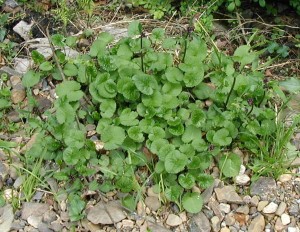
Colony of golden ragwort growing in gravel next to a small creek. Note the heart-shaped basal leaves.
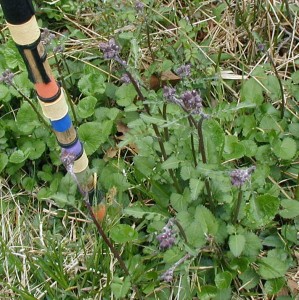
The outside of the flower heads are a deep purple color as are the stems.

Flower stalks rise up and hold the flower heads some 12 to 20 inches above the leaves and even higher when the flowers are in bloom. My walking stick is marked off in inch increments. The top black section measures 20 inches from the ground. (Photo directly above and the remaining photos were taken 30 April 2010. The first two photos were taken 18 April 2010.)
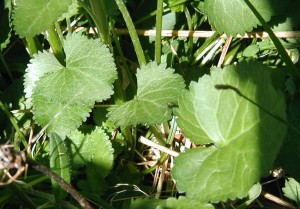
Leaves at the bottom of the stems are rounded or heart-shaped with rounded teeth.
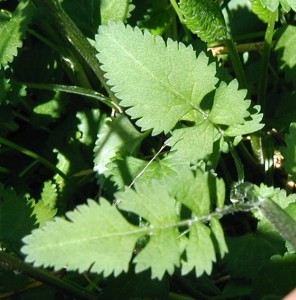
Leaves higher up the stems are cut or dissected and they get more narrow, but they retain the rounded teeth. Leaves right below the flower heads are very narrow and more finely cut.
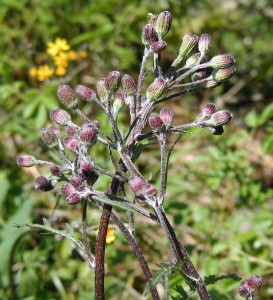
Note the purple outsides of the flower heads before the golden ragwort blooms.
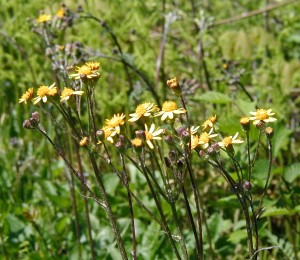
Half of the golden ragwort flowers are open.
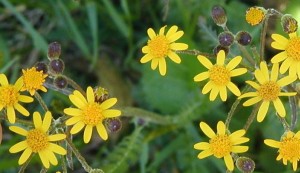
Golden yellow rays are sparsely situated around the center disc flowers in this composite flower.

Habitat for golden ragwort includes wetland areas, like that found next to this creek. The Peterson Wildflower Guide states that swamps and wet meadows are other likely places to find Golden Ragwort.